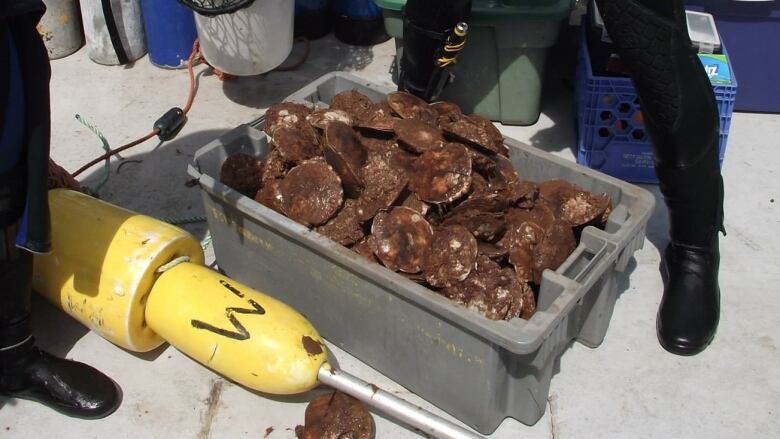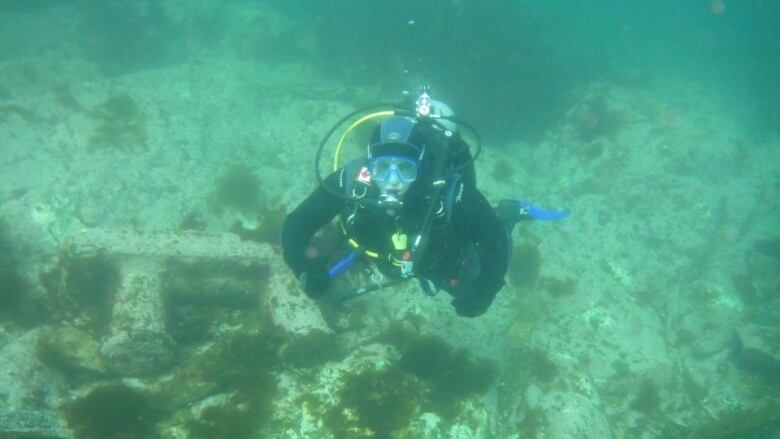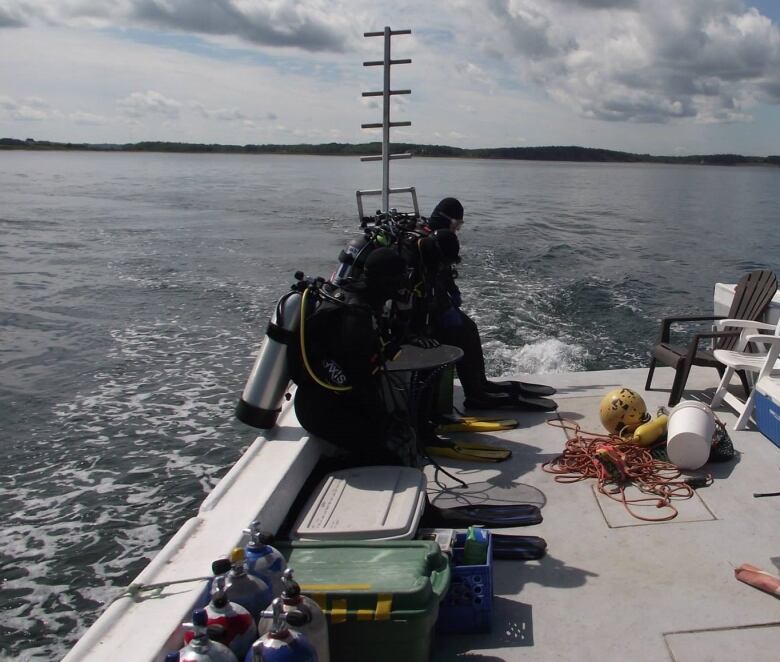Scallop diving allowed in new P.E.I. recreational fishery
'Its definitely going to revive some of the interest in scuba diving here on P.E.I.'

Divers can now harvest scallops in a new recreational fishery on Prince Edward Island.
A group of about 10 Island divers, including Kelly Campbell, lobbied Fisheries and Oceans Canada for more than a year to get the opportunity.
"There has been great interest in opening up a fishery here," said Campbell, adding it's not just from local divers but from off-Island too.
"I've had dive groups approach me from Nova Scotia and New Brunswick saying that if they could go scallop fishing here it would be part of a trip that their group would make over here It's definitely going to revive some of the interest in scuba diving here on P.E.I."

P.E.I. divers were fishing in Nova Scotia
Campbell has been taking the ferry over to Caribou, N.S., to go scallop fishing there for the last couple of years because it wasn't permitted on the Island. But that changed on May 1.
DFO has approved recreational scallop harvesting, with scuba gear only, along the south shore of P.E.I., about 2.5 kilometres offshore in water that's about 15 meters deep.
Divers can take anywhere from 50 to 100 scallops a day, depending where they're harvesting.
"We just float along the bottom, in the current of the Northumberland Strait, and pick them up by hand," said Campbell.
Not open season
The scallops have to be measured to make sure the diameter of the shell is at least 102 mm. Anything smaller has to be thrown back.
"The bigger scallops are obviously the more mature ones that have done spawning," so the health of the stocks are protected, said Campbell.
He agrees harvesting up to 100 scallops a day per diver sounds like a lot, but said to harvest that many would take up to four dives in a single day, and he doesn't think many people will do that.
"It's not going to be an open season where all of a sudden we're going to get, you know, 5,000 people going to get a recreational scallop licence," said Campbell.
"They'll be a select few out multiple times a year."

Concerns from commercial fishermen
A variety of concerns were raised by commercial scallop fishermen on P.E.I. during the discussion phase with DFO, according to Campbell, including where recreational fishing would be allowed and whether it would interfere with the commercial catch.
He believes these concerns have been addressed.
Divers are fishing in a shallower area closer to shore where commercial scallop fishermen aren't allowed to harvest because it could damage lobster breeding grounds.
"That's the area that the divers are going to be in, because it tends to be the shallower waters up to 70, 80, 90 feet," he said.
"The commercial fisheries take place in deeper waters, so we're not looking in any way to compete and start picking anywhere that the commercial fisheries are allowed to go."

First recreational catch likely in July
The recreational season is already open, but Campbell doesn't anticipate anyone he knows will go out until the lobster season closes at the end of June out of respect for the lobster fishermen and safety of the scallop divers.
"In the Northumberland Strait there is a fair bit of current, there's a fair bit of tide," he said.
"That's part of the fun of the dive, you know, instead of kicking out and swimming along you just sort of ride the current and pick up the scallops as you float by."
But that can be dicey when there is lobster gear in the water.
"It's just a safety issue for divers. We don't want to catch up in their equipment," said Campbell.
"They're working. That's their livelihood and they don't need to be looking in the water for divers."
- MORE P.E.I. NEWS | Lorie Kane and her mom featured in WestJet's newest #LoveMom ad
- MORE P.E.I. NEWS | How Islanders can help people hit by the Fort McMurray fire












_(720p).jpg)


 OFFICIAL HD MUSIC VIDEO.jpg)
.jpg)



























































































